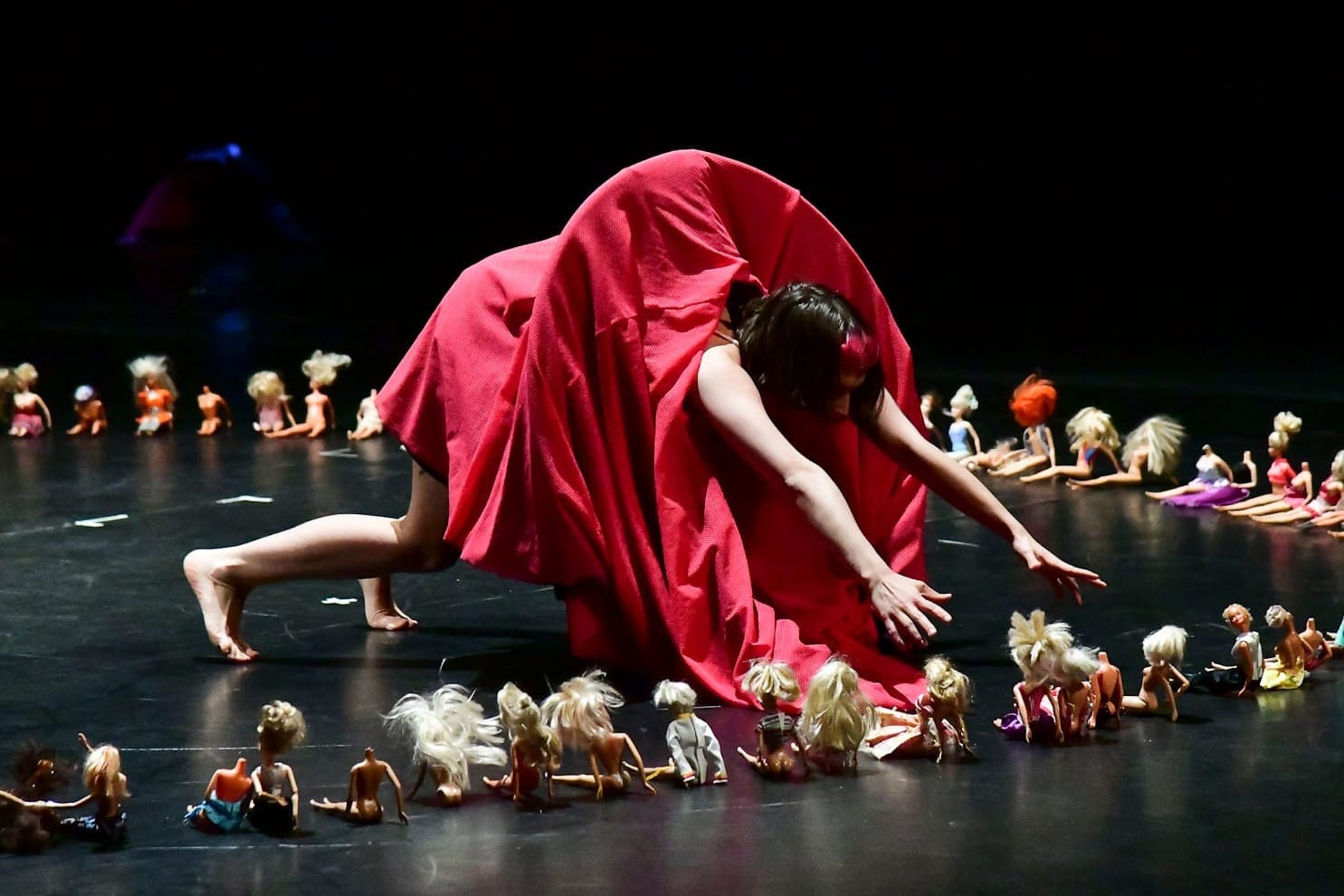Sausage, hair, and a Barbie’s leg

After the opening show Croûte by Cie De Fracto juggler Guillaume Martinet in Rīgas cirks yard, the remainder of the first evening of RE RIGA! festival takes place in the renovated arena. The evening's programme consists of three performances, two of which are work-in-progress shows supported by circusnext, the EU label development platform for contemporary circus arts – Miss SBarbie by Italian artist Morgana Morandi and Saucisson by Lithuanian circus company Taigi Cirkas, finalist and winner of the 2024 circusnext selection - while the third is a UK-Latvian-Lithuanian collaboration, Art for Rainy Days' show How a Spiral Works. All three performances share the female body, questions of its representation and the search for innovation in circus.
In the centre of the arena is a circle, the points of which are made up of various Barbie dolls - with and without heads, dressed up, naked, but all perfectly seated. At the centre of the circle is Morgana Morandi, balancing between her childhood memories of playing with beautiful dolls and the Morgana of today, who presents her work Miss SBarbie to an arena full of spectators. The show, subtitled a punk collective history about our messed-up bodies, focuses on the doll that for some time has robbed women of a true representation of their bodies.

“Greetings, ladies and gentlemen! Men, make yourselves comfortable, women, put your feet together properly to one side,” the first border is drawn with a phonogram – the show is about both the Barbies on stage and among the audience. The spectator is important in the performance, not exactly as a co-author but as a participant in the event - Morgana tells her own story and the story of other women whose bodies have been objectified. With minimal means - a pink sunburst skirt and an aerial hoop - the artist plays the roles of various famous women, leaving the audience to guess which cliché is being portrayed. Later, she introduces us to all her plastic dolls, which only Morgana herself can tell apart. The line is broken, and a pink remote-controlled car, Franchina, enters her world - a friend who does not like these dolls.

From now on, the world of dolls is mixed up, and deconstructed into pieces, the show is intensified by throwing Barbies into piles. Two dolls hang in the air - the whole one and the disarranged, deformed one. The artist's stage technician (Vittorio Catelli Lasagni/Simone Di Biagio) runs out and hands out doll body parts to the audience - someone gets the leg, someone else the head, torso or arm. Franchina brings a pink drill on her back, with which Morgana Morandi herself is deconstructed - she uses the drill to correct herself. She allows herself to move in all directions, not to be plastic like a doll, but to be alive and changeable like herself. And then there is a shared ritualistic action - people can free themselves from the plastic pieces they are holding. They can free themselves from the idea of a female body. The audience can experience the gentle violence with which the plastic pieces are thrown in the direction of the artist. She accepts them. She wants to receive them all so that no one is left with a false impression, and so that our collective story can be retold in new halls, perhaps with other changes, until the work-in-progress show is a finished performance.

When the Barbie explosion is removed from the stage, the audience returns from the intermission to a more minimalist arena, at the centre of which is a rope that transforms into a young woman - Alise Bokaldere - or is she the rope? Either way, the Latvian contemporary dance artist's braid is attached to the rope, embodying its end. She is soon joined by aerial acrobat Izabelė Kuzelytė. This is the beginning of the show How a Spiral Works by the interdisciplinary collective Art for Rainy Days. The group consists of Alise Bokaldere, Izabelė Kuzelytė and British playwright Jason Dupree. In this collaborative peace, all three artists seek the meeting point between aerial rope and dance, between air and ground, between two selves.

Izabelė and Alise perform dance movements and acrobatic elements in the middle of the arena, bound at both ends by a rope. In their movement, however, they liberate the action from the narrative, the circus from humour, and the spectator from expectation, and lead him into meditation. Unnoticed, the aerial rope begins to swirl, forming a spiral. How does a spiral work - is the question that comes to mind - who moves it? Why is it moving? These are the questions that keep the audience in suspense for a while until... in a short time spectators are under a spell. They are free from their conscience. In the end, the two artists face each other knowing the secret of a spiral.


Also in the third performance of the evening, women and ropes are already on the playing field when the audience enters the arena. In the performance by the Taigi Cirkas, with the aurally subtle French title Saucisson, the two Lithuanian artists Izabelė Kuzelytė and Elena Kosovec are above ground from the very beginning - two bodies in polythene sheets, two products, two pieces of meat, animal flesh hung for slaughter.


A woman emerges from the bag, an unmistakably sexy woman in high heels, blond hair, wearing a blue silk dress - a consumer's, that is, a man's dream. Her blunt movements, and the undisguised sexuality in her gaze, are frightening. She licks her lips and sits down on a chair facing the audience. This already violates the usual movement score of the circus discipline - there are no tricks here, this is a cinematic and theatrical aesthetic. The movements have the danger of David Lynch's films and the mystery of Samuel Beckett's plays. There is a sort of confusion in the audience, a desire to assign a narrative, to identify the action and to see - what happens next.
Out of the plastic bag like a sausage wrapper, another flesh emerges. Its movements are fast and unpredictable, and its confusing and unusual nature could be called the sausage dance, guided by the inner impulses of aerial acrobat Izabelė Kuzelytė. Soon she comes to the rope, where the two female figures meet. The first is a woman objectified in heterosexual perception, the second is a free sausage, nothing more and nothing less, who seems to resent his symbolic assignation to the phallic world. In the end, they unite in a common movement: both artists open their mouths to each other like sex dolls, following the ironic perspective of the male gaze, or open their mouths in a cry for help, inaudible to the audience.

However, the audience can see and feel this cry for change in the perception of circus art from all the artists. Through a feminist prism, I was able to see these three multi-genre productions as they were in August 2024, in this order, thanks to the RE RIGA! festival. Maybe they will change and improve, perhaps they will be reborn in new forms. But they already have values encoded in them - women in circus, new media and love for the performing arts.

